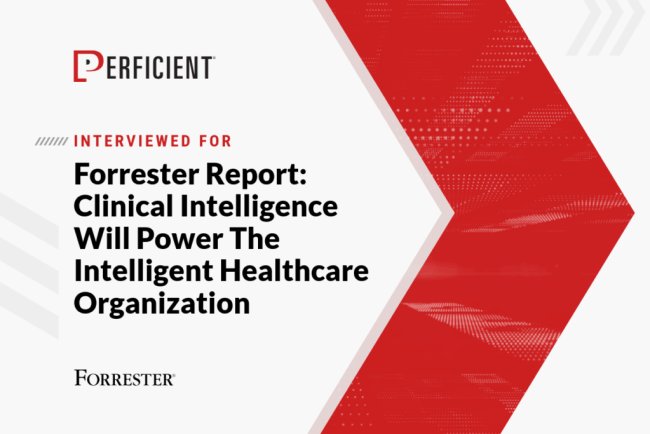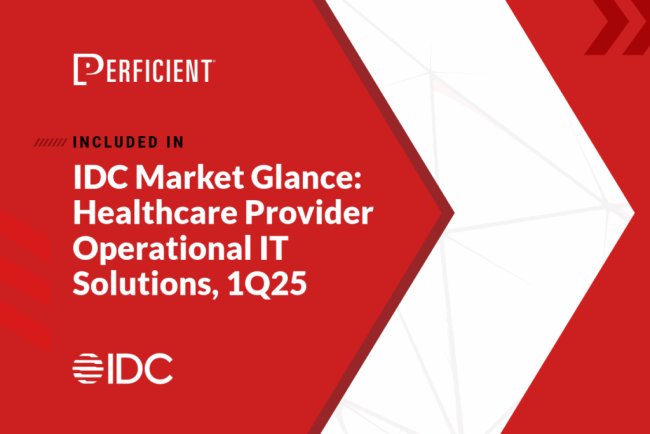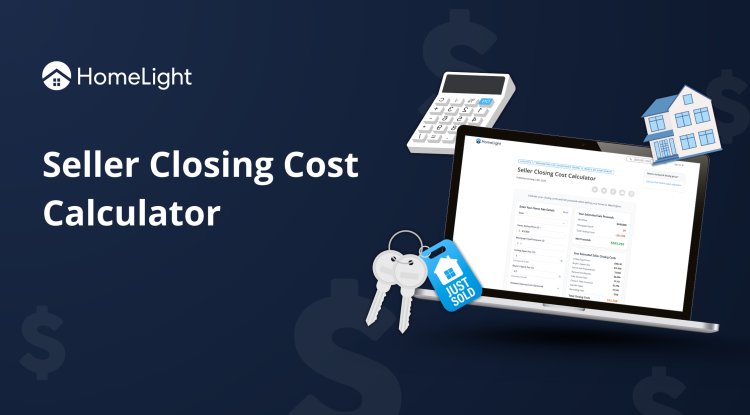Intelligent Automation in Healthcare, Part 1: Bridging the Gap
Faced with rising patient volumes, care complexity, and financial and labor pressures, healthcare organizations are looking at new ways to deliver better outcomes more efficiently. Intelligent automation (IA) has emerged as a powerful solution for achieving operational excellence and enhancing decision-making. This is the first installment of our Intelligent Automation in Healthcare blog series, where […]

Faced with rising patient volumes, care complexity, and financial and labor pressures, healthcare organizations are looking at new ways to deliver better outcomes more efficiently. Intelligent automation (IA) has emerged as a powerful solution for achieving operational excellence and enhancing decision-making.
This is the first installment of our Intelligent Automation in Healthcare blog series, where we’ll explore what IA really means, how it differs from previous automation solutions, and why it’s becoming essential for healthcare transformation.
In this series, we’ll go over 4 key areas of IA and what it means for healthcare organizations:
- This article, Part 1, discusses what IA really means and why it’s essential for healthcare transformation
- Part 2 considers how increasing patient volumes and care complexity are overwhelming healthcare systems, and how IA can help
- Part 3 considers the economic and operational pressures healthcare organizations face, and how IA supports cost control and revenue growth
- Part 4 explores how IA helps healthcare organizations meet regulatory mandates, manage risk, and build future-ready systems
How Intelligent Automation Is Streamlining Healthcare Workflows
The term automation has been around for decades, but its meaning has evolved significantly in recent years. In the 1990s and early 2000s, legacy automation focused on rules-based workflows such as claims routing or basic task automation. These solutions were rigid, code-intensive, and often required traditional process modeling and orchestration using BPMN (Business Process Model and Notation). While they previously offered some efficiency benefits, they currently lack the adaptability and intelligence needed for modern, scalable systems.
That’s where IA comes in. Intelligent Automation offers a more streamlined way of enabling real-time decisioning and dynamic workflows by leveraging different automation technologies together. It’s not accomplished by a single technology working independently, but rather through a combination of insights and technologies acting in concert.
Key Components of Intelligent Automation
It’s common for enterprises to approach automation through a technology lens like robotic process automation (RPA) and then report they are “fully automated.” These organizations sought a specific solution and, in most cases, are stretching the technology beyond its intended purpose.
While partial automation can be achieved through traditional digital process automation (DPA) platforms or process orchestration, IA occurs at the intersection of process mining, DPA, RPA, and artificial intelligence (AI). We are now moving towards an era of agentic frameworks, where automation isn’t limited to executing repetitive manual tasks or following predefined workflows, but also provides recommendations and decisions based on situational context and which actions can be taken.
Key components of Hyperautomation include:
- RPA and APA: Robotic process automation and the new Agentic process automation to not only automate repetitive tasks but also do complex automation with contextual awareness
- GenAI-enabled Process Discovery: Using generative AI to transform legacy business processes and application
- Agentic AI: Autonomous decision making within business workflows
- Case Management: Managing complex business process with defined stages and steps to move a case through it
- Intelligent Document Processing (IDP): Digitizing unstructured data from claims, enrollment forms, and faxes to enable seamless DPA across platforms.
- Low code/No code: Solution development with minimal coding effort
These technologies work together to reduce costs, improve process quality, and increase speed and agility—while also enhancing the experiences of patients, providers, and employees.
Learn More: Engineering Wellness and Efficiency in the Generative AI Era
The Need for Intelligent Automation Is Growing
Digital transformation demands agility and flexible frameworks that legacy systems do not support, which is accelerating the adoption of IA in healthcare.
The momentum is undeniable:
- In its 2025 healthcare predictions report, Forrester estimates that half of the top 10 U.S. health insurers will implement AI-powered tools to support contact center employees and care advocates in 2025.
- In its FutureScape Worldwide Healthcare Industry 2025 Predictions report, IDC predicts that by 2027, IA is projected to help the healthcare sector save up to $382 billion by enhancing efficiency across clinical, operational, and administrative workflows.
These trends reflect a growing acknowledgement that automation is not only a cost-saving tool, but a strategic enabler of better care delivery, operational resilience, and competitive advantage.
You May Also Enjoy: Reimagining Find Care: How AI is Transforming the Digital Healthcare Experience [Webinar]
How Intelligent Automation Can Transform Healthcare Organizations
IA is already transforming healthcare across a wide range of functions. Here are just a few examples of how it can improve patient, provider, and payer operations:
Conversational AI (using GenAI)
- Context search across multiple documents based on prompts
- Case summary and comparison of content
Document Triage
- Channel intake, classification, data extraction, validation, and entry
- Integration of specialized AI and generative AI for faster, more accurate processing
Patient & Provider Operations
- Patient enrollment, insurance and benefit verification, prior authorization, scheduling
- Provider validation and NPI search
- Provider lifecycle management
Pharmacy & Supply Chain
- Order fulfillment, inventory management, compliance, and patient profiling
- Manage supply chain disruptions with AI
Consultation & Care
- Case management, utilization management, clinical analytics, and value-based care
- Prior Auth modernization
Claims Processing
- End-to-end automation from claim ingestion to quality control and audit
- Member and provider outreach, Medicare coordination, and COB
Enrollment
- End to end automation of enrollment process for requests received from different channels
These use cases go beyond simple task automation by reimaging entire workflows to deliver better outcomes, reduce costs, and improve efficiencies.
Read More: Revolutionizing Clinical Trial Data Management with AI-Powered Collaboration
Empowering Intelligent Healthcare Solutions Through Automation
Perficient combines strategy, industry best practices, and technology expertise to deliver award-winning results for leading healthcare organizations:
- Business Transformation: Activate strategy for transformative outcomes and health experiences.
- Modernization: Maximize technology to drive health innovation, efficiency, and interoperability.
- Data Analytics: Power enterprise agility and accelerate healthcare insights.
- Consumer Experience: Connect, ease, and elevate impactful health journeys.
We are trusted by leading technology partners, mentioned by analysts, and Modern Healthcare consistently ranks us as one of the largest healthcare consulting firms.
Discover why we have been trusted by the 10 largest health systems and the 10 largest health insurers in the U.S. Explore our healthcare and automation expertise. Contact us to learn more.
And don’t miss Part 2 of this series, where we’ll be exploring how increasing patient volumes and care complexity are overwhelming healthcare systems, and how IA can help. See you then!








